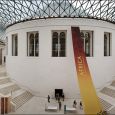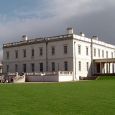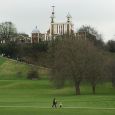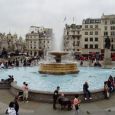London
Advertisement
By Air
London Heathrow is the major airport serving the city, but there are four other airports that are considered London airports and there are few other cities in the world with such extensive air travel connections.
Heathrow Airport, 15 miles west of London is one of the worlds busiest airports and is currently extending to a fifth terminal to cope with the ever increasing air traffic. Journey time on the express train to Paddington is around 15-20 minutes.
Gatwick Airport is around 30 miles south of London and is the UKs second busiest airport, with around 200 destinations served from its two terminals. The Gatwick express to Victoria takes around 30 minutes.
Stansted is a fast growing modern airport, around 30 miles northeast of the city centre and is popular with budget airports offering cheap flights around Europe. Luton Airport, some 30 miles north of London is also a growing facility, and is also served by a number of budget airlines. London City Airport is the most central, but also the smallest of the London airports, serving around 2 million passengers a year.
By Car
London is encircled by the M25 motorway and there are a number of motorways (M roads) that link the city to the rest of Britain. The M1 travels north to Leeds, the M20 southeast, the M11 northeast to East Anglia and Cambridge, the M23 goes south to Gatwick, the M3 to Southampton, the M4 west to Bristol, and M40 to Oxford and Birmingham.
Cambridge and Oxford are both around 90 minutes drive from London, Birmingham about 2 hours, and Bristol about 3 hours. If youre driving from France, the Eurotunnel arrives at Folkestone, from where you can join the M20.
By Rail
From London there is an extensive rail network to destinations all over the country, but the services are much maligned and can be rather erratic. Train services are provided by a number of different companies, and all information can be obtained through National Rail Enquiries (www.nationalrail.co.uk). Londons major stations provide services to different regions: Euston and Kings Cross for the north of England and Scotland; Paddington for the south west, South Wales, the Midlands, and Heathrow Airport; St. Pancras for the EuroTunnel, Liverpool Street for East Anglia, Victoria for the southeast and Gatwick Airport. There are also a number of smaller stations for regional services.
By Bus
National and International long distance buses terminate at Victoria Coach Station, a short walk from the train station. There are decent facilities here; a left-luggage office, ATMs, money exchange and information desks. National Express operates services throughout the UK and Eurolines has departures from London to over 500 European destinations.
Advertisement
Tower of London
Historically the Tower is the most important building in England and the most visited of London's attractions. It was a stronghold which was many times besieged but never taken; but it was also a royal palace (until the time of James I), a prison (still used during the last war, when one of its inmates was Rudolf Hess), a mint (until the opening of the Royal Mint nearby in 1810), a treasure vault (still containing the Crown Jewels), an observatory (until the establishment of Greenwich Observatory in 1675) and for five centuries (until 1834) a menagerie.
The Tower was built by William the Conqueror after the battle of Hastings to protect London, to overawe its citizens and to enable shipping on the Thames to be watched. The original Tower, built about 1078 and surrounded by a ring of walls with 13 towers, is now known as the White Tower. The fortress was enlarged and strengthened in the 12th century, and again in the 13th and 14th. It was restored in the 19th century.
Queen's House
Queen's House is a building of great interest in its own right. A Palladian mansion, designed by Inigo Jones - imitated in many other houses of the period but never equalled - it is a masterpiece of Classical architecture, notable for its symmetrical proportions, harmoniously contrived detail and finely executed marble floors, wrought-iron ballustrades and carved and painted ceilings. The house, begun in 1617, was commissioned by James I as a residence for his wife, Anne of Denmark, but was abandoned after her death. In 1629 Charles I had it completed by Inigo Jones for his wife, Henrietta Maria. The latter, who had fled during Cromwell's domination, returned to the palace in 1660. With Greenwich Park as its garden Queen's House epitomises the entire art form of royal residences. After six year's renovation, which cost five million pounds, Queen's House was reopened in May 1990.
Greenwich
Greenwich, one of London's most attractive suburbs, lies 10km/6mi downstream from London Bridge on the south bank of the Thames. It is famous for its Observatory (through which runs the Greenwich Meridian), its large Park, the National Maritime Museum and the old Greenwich Hospital which now houses the Royal Naval College. In Greenwich itself, the streets, pubs, church (St Alfege) and market are well worth exploring.
Under the title Historic Maritime Greenwich are included the historical places and museums in Greenwich; the Queen's House, the East and West Wings which were added to it in the 19th century housing the National Maritime Museum, the Old Royal Observatory in Greenwich Park and the museum ships "Cutty Sark" and "Gipsy Moth IV".
British Museum
The British Museum, which also houses the British Library, is one of London's greatest tourist attractions. The Museum itself has one of the finest collections in the world covering the art and antiquities of Assyria, Babylonia, Egypt, Greece, the Roman Empire, Southern and Southeast Asia, China and the European medieval period. The Library has additional exhibition rooms. The private collections of Sir Robert Cotton (d. 1631), Robert Harley, Earl of Oxford (d. 1724) and Sir Hans Sloane (d. 1753) formed the basis of the Museum. Founded by an Act of Parliament in 1753, the Museum was accommodated from 1759 in Montague House before moving to its present Neo-classical building, erected between 1823 and 1857. This was designed by Robert Smirke and completed by his brother Sydney, who was responsible for the circular Reading Room and the dome. The main facade is 123m/403ft long and has a colonnade of 44 Ionic columns. On the north side is the King Edward VII Building, erected in 1907 to 1914. Parts of the museum are now housed in separate buildings, including the Museum of Mankind and the National History Museum.
Trafalgar Square
Trafalgar Square, the name of which commemorates Nelson's victory over a French and Spanish fleet at Trafalgar in 1805, was laid out between 1829 and 1851 by Sir Charles Barry. It is one of the city's most popular meeting places for tourists from all over the world.
Under the balustrade on the north side of the square, in front of the National Gallery, the Imperial standards of length (one inch, one foot, two feet, one yard, one chain and 100 feet) are let into the stone.
Notable monuments on Trafalgar Square include statues of Henry Havelock, General Gordon, Charles James Napier and an equestrian statue of George IV.
The buildings surrounding Trafalgar Square include Canada House on the west side and South Africa House on the east side, as well as the church of St Martin-in-the-Fields. From the southwest corner the street leads to the imposing Admiralty Arch and The Mall.
St Paul's Cathedral
St Paul's Cathedral, seat of the Bishop of London and "parish church of the British Commonwealth", is the largest and most famous of the City's churches. The place where the present-day cathedral stands was the site of a Roman temple of Diana and in the seventh century of a church. In its day one of the richest churches of the world, was Old St Paul's, a great Gothic church with a spire 170m/500ft high which was badly damaged by fire in 1561, partly rebuilt by Inigo Jones in 1627-42 and finally destroyed in the Great Fire (1666). The present cathedral, begun in 1675 and completed in 1711, was designed by Sir Christopher Wren. The plan was approved only after long wrangling with the church commissioners, who turned down Wren's first two designs. The result was a compromise between Wren's original idea of a dome and the commissioners' preference for a plan in the form of a Latin cross. As finally built, however, St Paul's is Wren's masterpiece - a harmoniously proportioned Renaissance church 170m/515ft long and 75m/227ft wide across the transepts, with two Baroque towers 67m/212f) high and a magnificent dome rising to a total height of 111m/365ft. Since the repair of damage suffered by the cathedral during the last war and the cleaning of the facade to remove the accumulated grime of 250 years, St Paul's has been restored to its original majestic beauty, and even the external sculptured decoration by Francis Bird, Edward Pierce and Grinling Gibbons can be seen and appreciated.
Information not available
January - February -> 2(°C) - Winter
July - August -> 22(°C) - Summer
Advertisement








